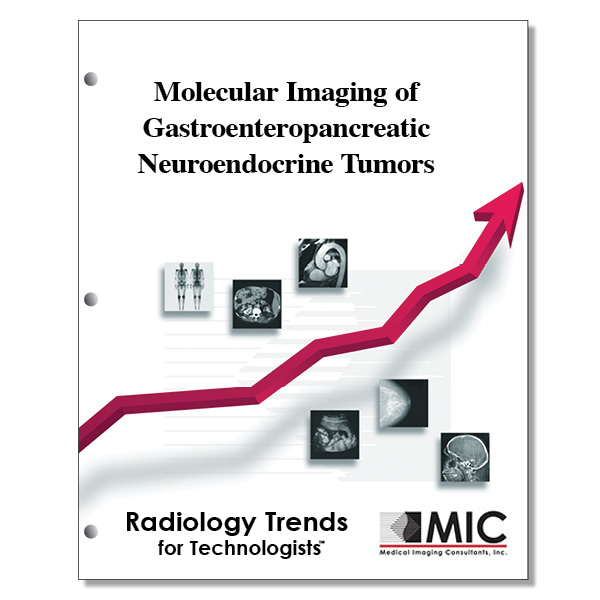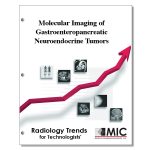

Molecular Imaging of Gastroenteropancreatic Neuroendocrine Tumors
An overview of the current status and future directions in molecular imaging of gastroenteropancreatic neuroendocrine tumors.
Course ID: Q00524 Category: Radiology Trends for Technologists Modalities: CT, MRI, Nuclear Medicine, PET, Radiation Therapy, Radiography2.25 |
Satisfaction Guarantee |
$24.00
- Targeted CE
- Outline
- Objectives
Targeted CE per ARRT’s Discipline, Category, and Subcategory classification for enrollments starting after March 18, 2024:
[Note: Discipline-specific Targeted CE credits may be less than the total Category A credits approved for this course.]
Computed Tomography: 0.50
Procedures: 0.50
Abdomen and Pelvis: 0.50
Magnetic Resonance Imaging: 0.50
Procedures: 0.50
Body: 0.50
Nuclear Medicine Technology: 2.25
Procedures: 2.25
Endocrine and Oncology Procedures: 2.25
Registered Radiologist Assistant: 0.50
Procedures: 0.50
Abdominal Section: 0.50
Sonography: 0.50
Procedures: 0.50
Abdomen: 0.50
Outline
- Introduction
- Overview of GEP NETS
- Presentation
- Tumor Grading and Disease Staging
- Role of Imaging
- Conventional Morphologic Procedures
- Primary Tumor Detection
- Tumor Extent and Metastatic Spread
- Radionuclide Imaging
- Radiolabeled Somatostatin Analogs
- Radiolabeled MIBG
- 18F-Fluorodihydroxyphenylalanine (18F-FDOPA
- 18F-FDG
- Toward Personalized Medicine
- Proposed Imaging Algorithm
- Therapeutic Decision Making
- Theranostics: The Image-and-Treat Attitude
- Conclusion
Objectives
Upon completion of this course, students will:
- know the type of neoplasms that GEP NETs are
- be familiar with the various types of gastric NETs
- be familiar with the presentation of duodenal NETs
- understand the basic facts associated with pancreatic NETs
- be familiar with the presentation of small-intestinal NETs
- know the symptoms of colonic NETs
- be familiar with the 2010 WHO GEP NET classification criteria
- know the GEP NET staging criteria
- know the value of functional imaging techniques to the management of patients with GEP NETs
- be familiar with the various conventional morphologic procedures for NETs
- recognize the primary characteristics and advantages of the currently available endoscopic and anatomic-imaging techniques for GEP NET investigation
- understand the strengths of both contrast-enhanced CT and MR for evaluation of GEP NET extent and metastatic spread
- be familiar with the processes that have been exploited for radiotracer development for radionuclide imaging of NETs
- know which SSTRs subtype is most frequently expressed by GEP NETs
- be familiar with the usage and advantages of 111In pentetreotide
- know the radiotracers that are collectively referred to as 68Ga-DOTA-peptides
- know the SSTR subtypes for which 68Ga-DOTA-peptides have affinity
- understand the advantages of 68Ga-DOTA-peptide imaging over 111In-pentetreotide imaging
- understand how the sensitivity of 68Ga-DOTATATE can lead to a change in therapy decisions, as found in the prospective study by Sadowski et al cited in the article
- know the condition for which 68Ga-peptide PET/CT is recommended in all patients
- know the reasons for 68Ga-peptide PET/CT to assess for NET recurrence
- be familiar with the benefits of using 68Ga-DOTA-peptide PET imaging versus 111In-pentetreotide SPECT imaging
- be familiar with the conditions that can be detected with 68Ga-peptide PET imaging, even though insulinoma detection through SSTR imaging has classically been associated with low sensitivity
- know the relationship between 68Ga-DOTA-peptide PET/CT and PRRT
- be familiar with the pitfalls of SSTR PET imaging
- understand the advantages of the proposed radiolabeled antagonists over the current agonist imaging agents
- be familiar with the facts about radiolabeled MIBG imaging
- know the cases where 18F-FDOPA has excellent imaging sensitivity
- know where 18F-FDOPA PET/CT is superior to both CT and 111In-pentetreotide SSTR scintigraphy
- know a definite advantage of 68Ga-DOTA-peptide PET/CT over 18F-FDOPA PET/CT
- know what is crucial for treatment planning, since surgical resection is associated with better symptom-free survival, overall survival, and quality of life
- know how 18F-FDOPA PET/CT of adult insulinoma detection might be improved
- know the GEP NET grades for which 18F-FDG is the preferred radiotracer
- understand the importance of increased 18F-FDG uptake to NET diagnosis
- be familiar with the proposed diagnostic imaging algorithm for patients with GEP NETs
- know the factors that play into the choice of morphologic and functional imaging techniques in the proposed diagnostic imaging algorithm for patients with GEP NETs
- be familiar with the available therapeutic options for unresectable advanced or metastatic GEP NET disease from well-differentiated tumors
- know the factors that affect management of GEP NET patients
- understand the so called “flip-flop phenomenon” relationship between the uptake of radiolabeled SSAs (or 18F-FDOPA) and that of 18F-FDG in low and high grade GEP NETs
- understand the term “theranostics” and what aspects of personalized medicine are integrated in theranostic patient management
